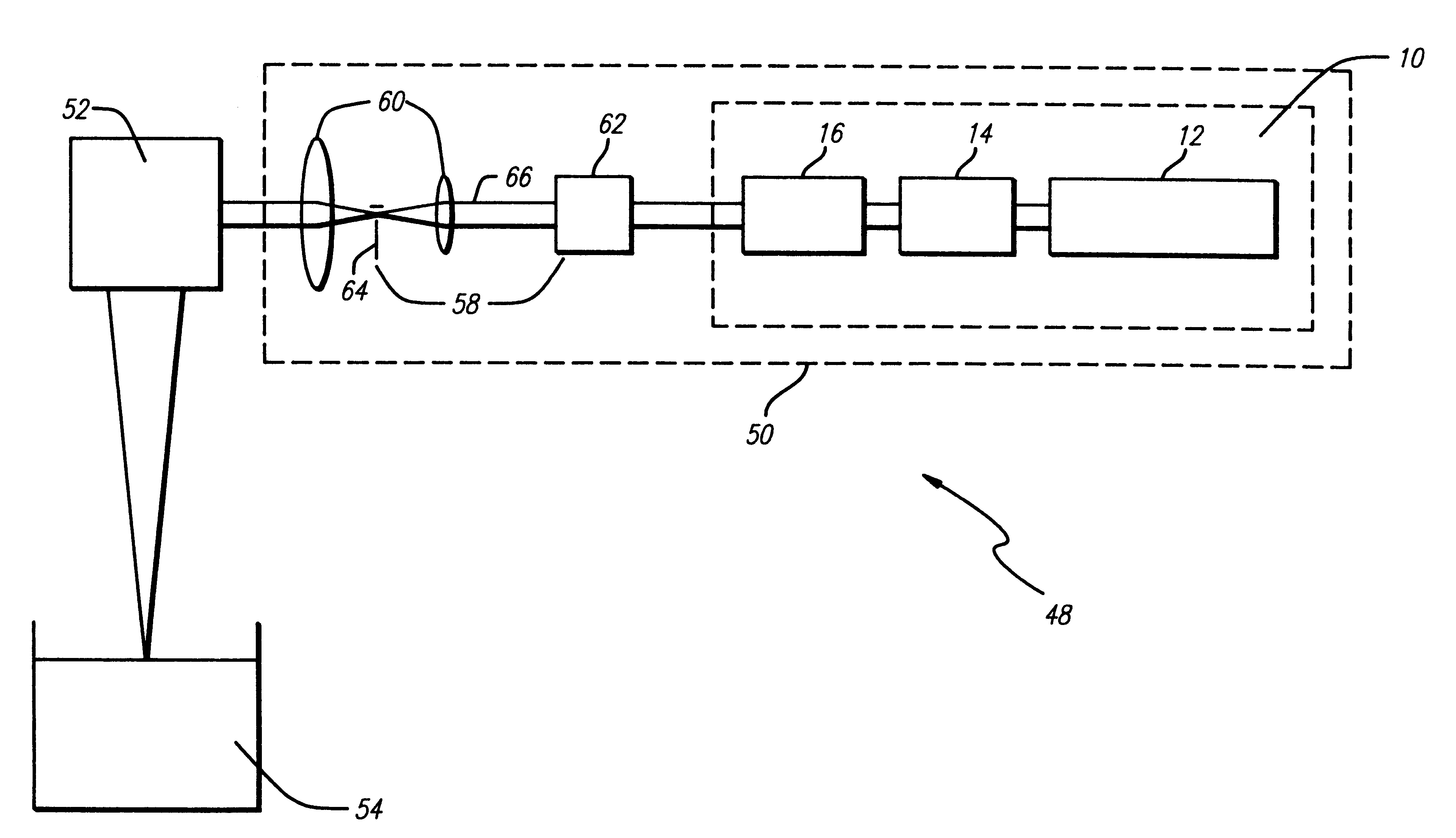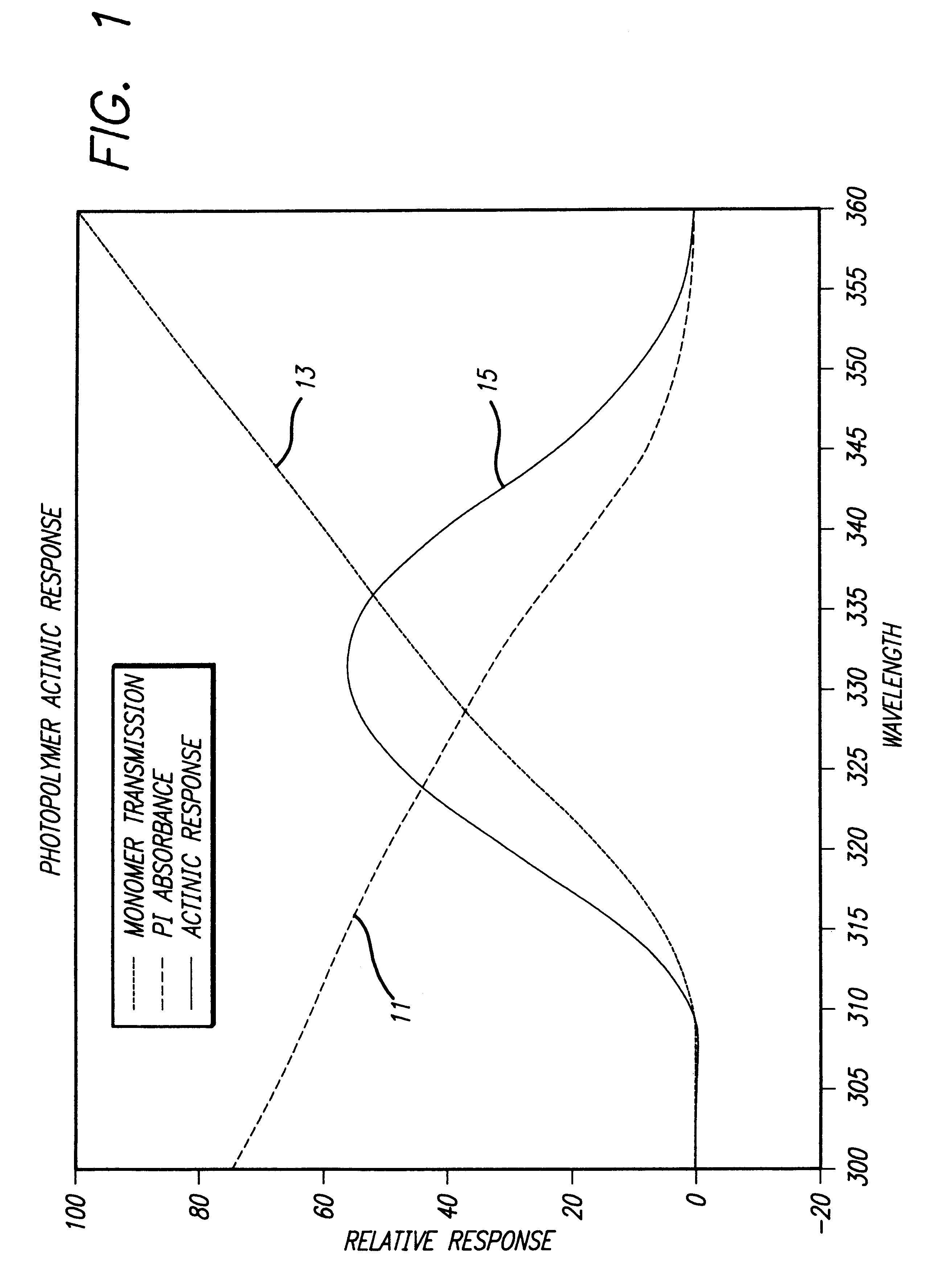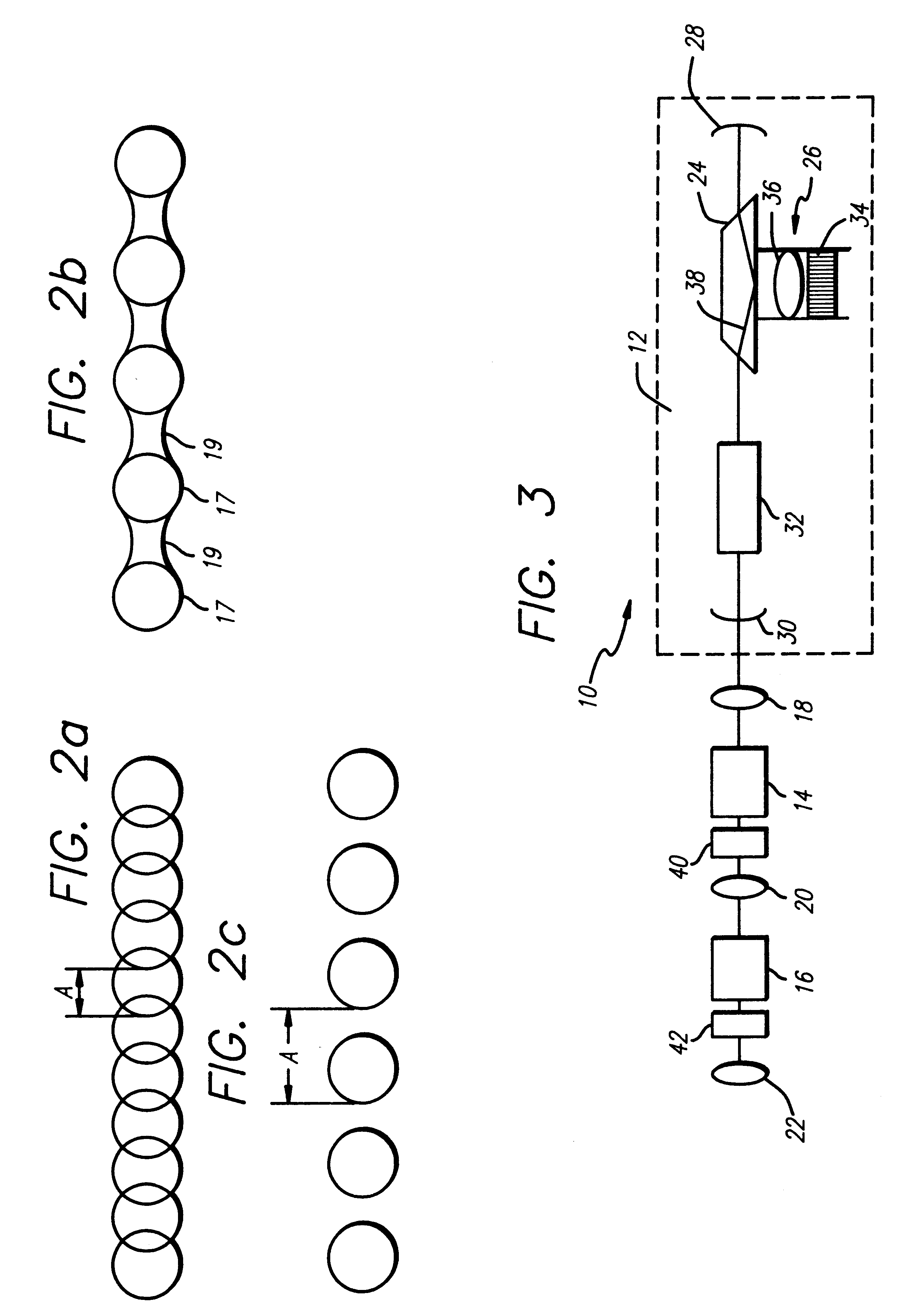Apparatus and method for forming three-dimensional objects in stereolithography utilizing a laser exposure system with a diode pumped frequency-multiplied solid state laser
stereolithography technology, applied in the field of apparatus and method for forming three-dimensional objects in stereolithography utilizing a laser exposure system, can solve the problems of unsuitability, limited output power of these lasers, and polymerization of monomers and oligomers, so as to achieve efficient object building and large-scale object building
- Summary
- Abstract
- Description
- Claims
- Application Information
AI Technical Summary
Benefits of technology
Problems solved by technology
Method used
Image
Examples
Embodiment Construction
Currently, commercially available solid state lasers operate in the red and infrared portion of the spectrum. Nonetheless, well known techniques for frequency converting the laser light from infrared to ultraviolet wavelengths exist. As the non-linear effects that lead to frequency conversion are proportional to the instantaneous power density, it is essential that the peak power be maximized to get the most efficient conversion possible. These frequency conversion techniques typically require, at a minimum, instantaneous power levels in the kilowatt range. The instantaneous powers referred to above are the ratio of the energy in each pulse to the duration of each pulse. The average power output of such lasers is determined, not just by the peak power level, but also by the number of pulses issued per second and by the duty cycle of the pulses (i.e. the pulse "on" time to total time). It is typical to use a Q-switching or mode locking technique to achieve high enough instantaneous p...
PUM
| Property | Measurement | Unit |
|---|---|---|
| wavelength | aaaaa | aaaaa |
| wavelength | aaaaa | aaaaa |
| output wavelength | aaaaa | aaaaa |
Abstract
Description
Claims
Application Information
 Login to View More
Login to View More - R&D
- Intellectual Property
- Life Sciences
- Materials
- Tech Scout
- Unparalleled Data Quality
- Higher Quality Content
- 60% Fewer Hallucinations
Browse by: Latest US Patents, China's latest patents, Technical Efficacy Thesaurus, Application Domain, Technology Topic, Popular Technical Reports.
© 2025 PatSnap. All rights reserved.Legal|Privacy policy|Modern Slavery Act Transparency Statement|Sitemap|About US| Contact US: help@patsnap.com



